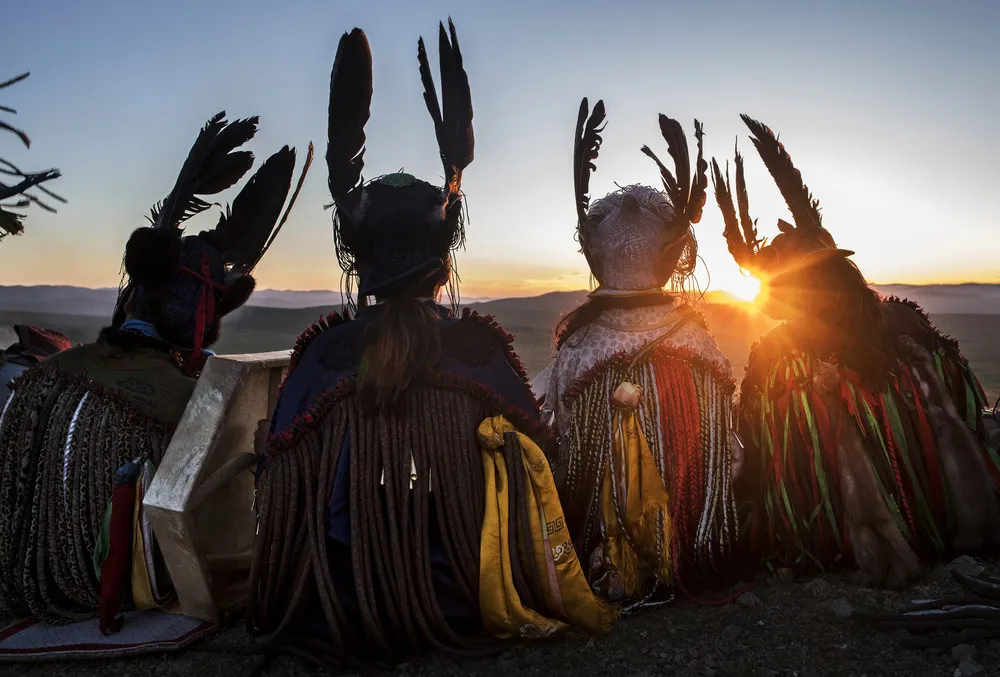|
Mongolian Shamans or Buu, sit together as they take part in a sun ritual ceremony to mark the period of the Summer Solstice in the grasslands on June 22, 2018 outside Ulaanbaatar, Mongolia. Banned for 70 years under Communist rule, shamanism has seen a resurgence in Mongolia since 1992, when the ancient practice became protected by the country's Constitution. Known as Tengrism, in which Shamans channel ancestral spirits, it is widely regarded as Mongolia's national religion and part of its indigenous identity. Shamans, it is believed, are chosen by their ancestral spirits to serve as a bridge to the living world; a conduit to provide healing, knowledge, and advice. Mongolia shamanism emerged from the grasslands thousands of years before Chinggis Khan founded the Mongol empire and has evolved with rituals in worship of nature and the eternal blue sky. Modern-day Shamans are more typically consulted for advice in business deals, illness, or personal difficulties. Shamans employ tools, including headdresses and mouth harps, to induce trances for the spirits to use their bodies and voices. While there are no official numbers, it is believed there are over 10,000 Shamans in Mongolia, and many have formed unions, organizations, and collectives. (Photo by Kevin Frayer/Getty Images)
|

